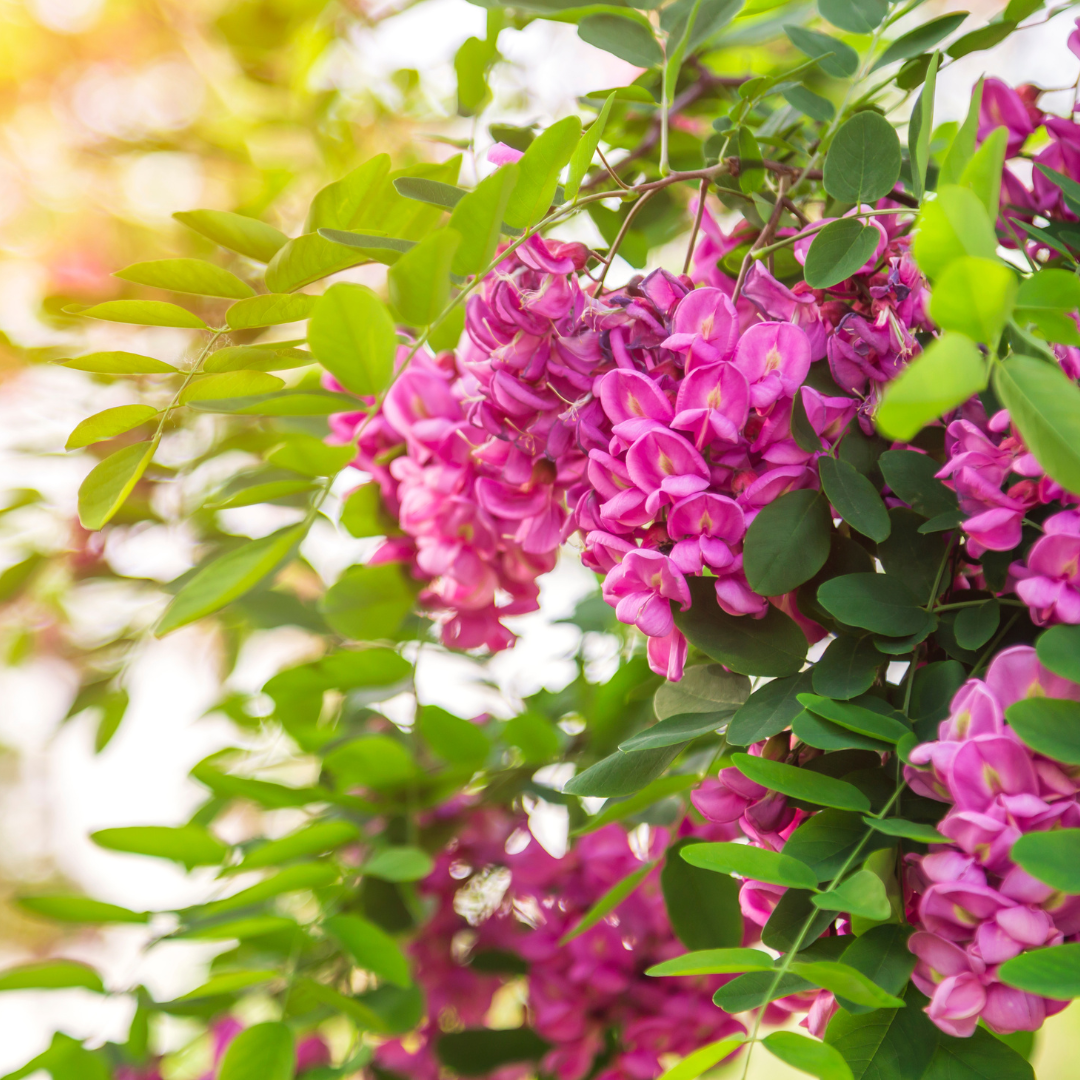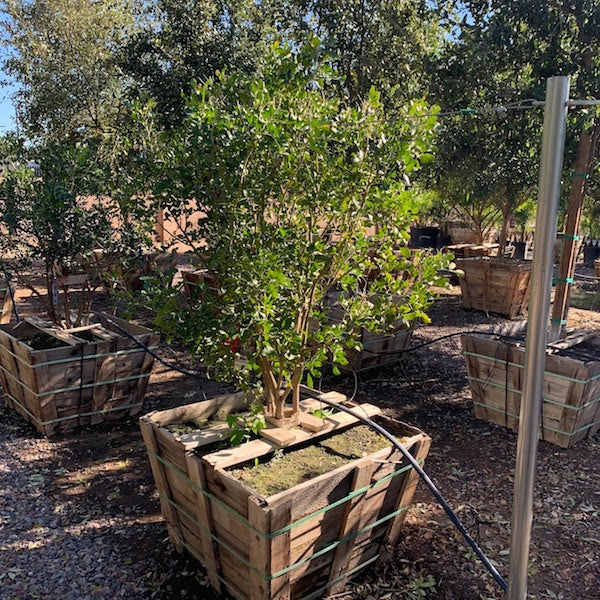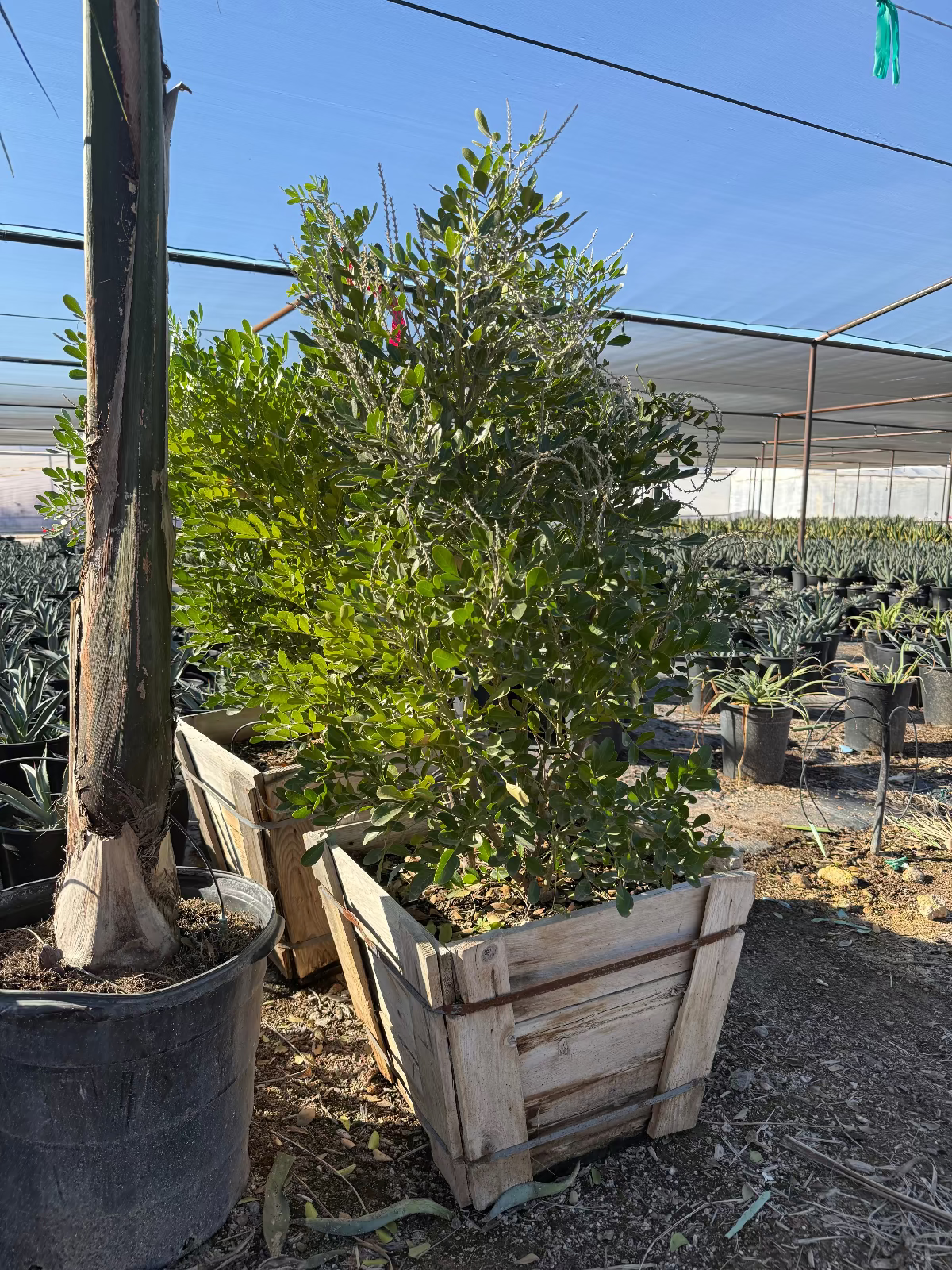My Store
Texas Mountain Laurel
Texas Mountain Laurel
Couldn't load pickup availability
Plant Type: tree
Plant Height: 15-25 feet
Spread: 8-10 feet
Flower Color: purple-blue
Sun Exposure: Full Sun or Partial Shade
Texas Mountain Laurel (Sophora secundiflora) – A Hardy, Drought-Tolerant Shrub Perfect for Arizona Landscapes
The Texas Mountain Laurel, scientifically known as Sophora secundiflora, is a versatile and visually striking evergreen shrub or small tree that thrives in the Arizona desert. Native to the southwestern United States and Mexico, this plant is known for its resilience, stunning flowers, and year-round beauty, making it an ideal choice for water-wise landscaping in arid environments.
Key Features of Texas Mountain Laurel
-
Stunning Floral Display In early spring, the Texas Mountain Laurel produces showy clusters of fragrant, purple, pea-like flowers. These blooms not only bring a burst of color to the landscape but also emit a pleasant, grape-like scent that fills the garden. The flowers attract pollinators such as bees, enhancing biodiversity in the garden. The vibrant color and sweet fragrance make the Texas Mountain Laurel a standout in any landscape design.
-
Evergreen Foliage The foliage of this plant is dense and evergreen, with small, leathery, dark green leaves that provide a lush appearance throughout the year. The compact and bushy growth habit makes Texas Mountain Laurel an excellent option for privacy screens or as a striking ornamental focal point in gardens, patios, and commercial properties.
-
Exceptional Drought Tolerance Adapted to the desert, Texas Mountain Laurel is extremely drought-tolerant once established. It requires minimal supplemental water, making it a low-maintenance and sustainable option for xeriscaping and desert landscapes. This plant can also tolerate a variety of soil types, including poor soils, further adding to its adaptability in challenging environments.
-
Manageable Size and Growth Texas Mountain Laurel grows slowly, reaching heights of 10 to 15 feet with a similar spread. Its moderate size and slow growth make it manageable in both small and large landscapes, offering flexibility in placement and design. This plant can be pruned to maintain its shape or allowed to grow naturally.
Important Considerations
- Toxicity of Seeds: The seeds of Texas Mountain Laurel are highly toxic if ingested, so it’s best to exercise caution when planting in areas accessible to children or pets.
Ideal Growing Conditions
- Sunlight: Prefers full sun for the best floral display and growth.
- Soil: Adaptable to a range of well-drained soils, including sandy and rocky types.
- Watering: Requires very little water once established; thrives in arid conditions with minimal care.
Landscape Uses
Texas Mountain Laurel is a versatile addition to various landscaping applications. It can be used as a specimen plant, in mass plantings for hedges, or in naturalistic desert gardens. Its resilience to drought and heat, coupled with its unique beauty, make it suitable for enhancing both residential and commercial properties.
Summary
The Texas Mountain Laurel is an excellent choice for Arizona landscapes, offering year-round beauty, fragrant flowers, and outstanding drought tolerance. Its striking purple blooms, evergreen foliage, and low maintenance requirements make it a highly valued plant for sustainable and attractive landscaping in the desert. Whether used as a focal point, a privacy screen, or part of a larger landscape design, Texas Mountain Laurel adds charm, functionality, and ecological value to outdoor spaces.
Three Timbers Installation Guide (Feel Free to Follow): Texas Honey Mesquite
Planting Guide:
- Location: Full sun (at least 6 hours of direct sunlight for optimal growth and flowering)
- Soil: Well-drained, sandy or loamy soil (slightly acidic to neutral soil preferred)
- Spacing: Space trees 12-15 feet apart to allow for optimal growth and to accommodate their canopy spread
- Planting Depth: Plant at the same depth as the root ball, ensuring the top of the root ball is level with the surrounding soil surface
- Support: Texas Honey Mesquite is a self-supporting tree and does not require staking. It grows into a small, rounded tree with a spreading canopy and produces sweet-smelling yellow flowers
Watering Guide:
Watering After Planting:
- Initial Watering: Water thoroughly immediately after planting to saturate the root ball and surrounding soil
- Frequency: Water every 5-6 days for the first 2-3 weeks to help establish the root system
- Watering Amount: Provide 3-4 inches of water per session for deep watering
When is the Plant Established?
- Timeframe: Texas Honey Mesquite is considered established after 6-8 months when the roots have spread into the surrounding soil
Watering Once Established:
- Summer: Water every 10-14 days during the hotter months. If temperatures exceed 100°F, increase watering to every 7-10 days. Provide 4-5 inches of water per session.
- Winter: Water every 4-6 weeks during the cooler months, depending on rainfall.
Drip Irrigation Setup:
- Placement of Emitters: Place the drip emitters 18-24 inches away from the base of the tree for deep watering of the root zone
- Flow Rate: Use emitters with a flow rate of 2-4 gallons per hour
- Number of Emitters: 2-3 emitters per tree for even watering distribution
- Adjusting Frequency: In summer, increase watering frequency to every 7-10 days. In winter, reduce to every 4-6 weeks
Share
















